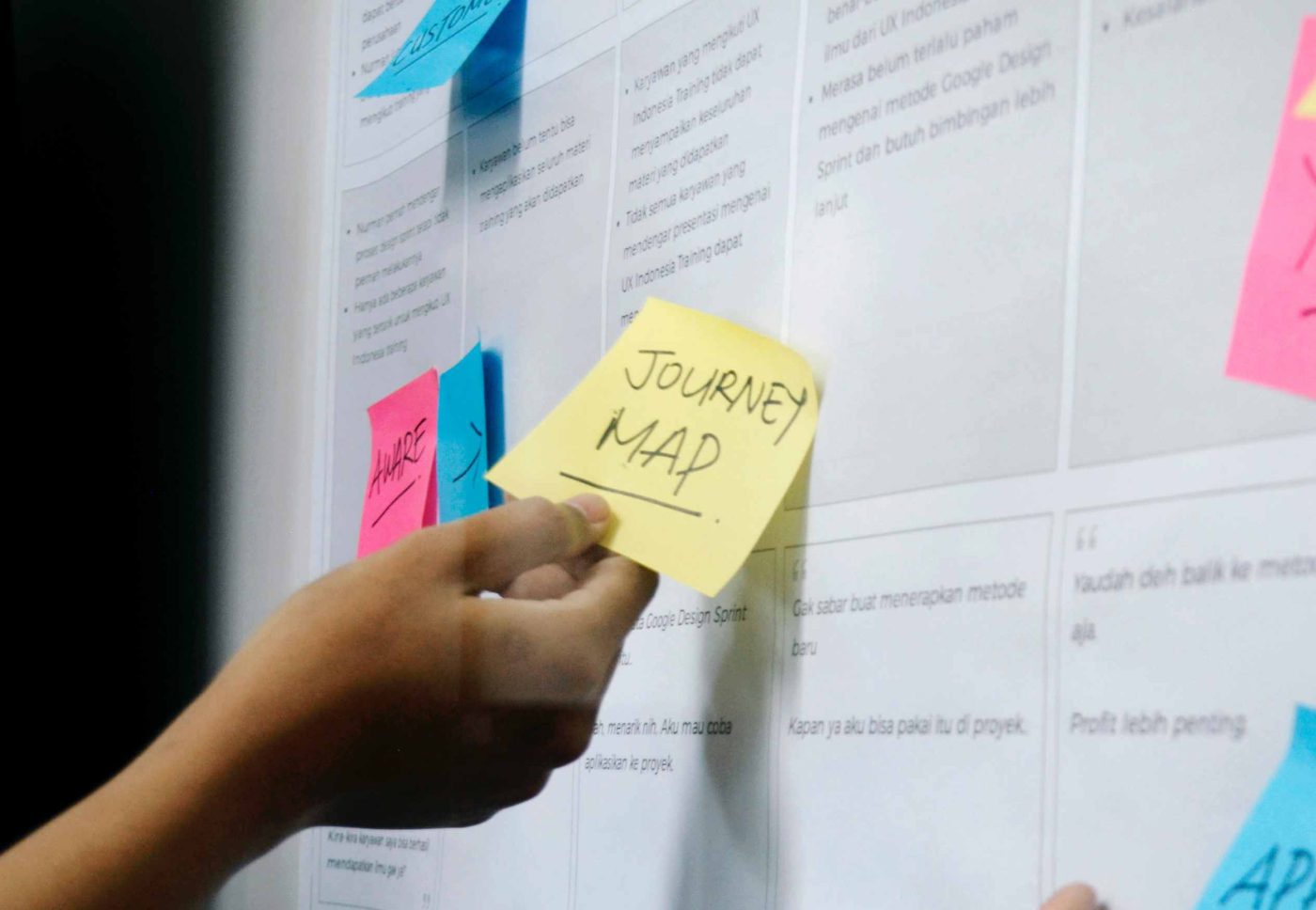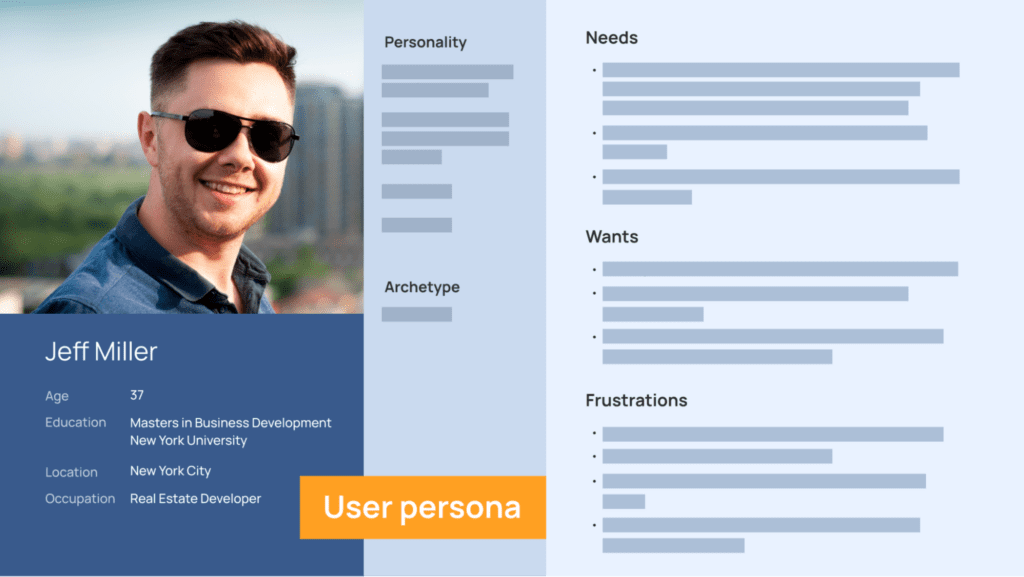
Have you ever shopped at IKEA stores (and not just went there for the delectable food on offer)?
If your answer is yes, then congratulations! You’ve experienced a one-of-its-kind customer journey.
Put simply, a customer journey map offers a visualized series of the steps a customer is supposed to take to interact with a product/service w.r.t their emotions, thoughts, and goals. At IKEA, these steps appear in the following sequence for say, a customer named Lisa:
- Viewing an advertisement for a new lamp exclusively available at IKEA.
- Thinking about the need for the lamp at her newly decorated apartment.
- Drive to the nearest IKEA store.
- Takes up the shopping bag and combs through the maze of products.
- Gets distracted by other products on the offer.
- Ends up picking a coffee table, a ceramic pot, and a couple of cushions.
- Locates the lamp, adds it to her shopping bag.
- Checks out of the store.
- Users the things she shopped.
- Leaves a review online.
All these are customer touchpoints covering every interaction Lisa has with the IKEA brand.
Like her, millions of customers are segregated into user personas even before brands chalk out their user journey map.
What are user personas?
Personas are fictional characters, which you create based on your research in order to represent the different user types that might use your service, product, site, or brand in a similar way.
What purpose do user personas solve?
The purpose of personas is to create reliable and realistic representations of your key audience segments for reference. These representations should be based on qualitative and quantitative user research and web analytics. Remember, your personas are only as good as the research behind them. Effective personas:
- Represent a major user group for your website.
- Express and focus on the major needs and expectations of the most important user groups.
- Give a clear picture of the user’s expectations and how they’re likely to use the site.
- Aid in uncovering universal features and functionality.
- Describe real people with backgrounds, goals, and values.
Why should you create User Personas?
Creating personas helps understand your users’ needs, experiences, behaviors, and goals.
Creating personas can help you step out of yourself. It can help you to recognize that different people have different needs and expectations, and it can also help you to identify with the user you’re designing for. Personas make the design task at hand less complex, guide your ideation processes, and help you to achieve the goal of creating a good user experience for your target user group.
What are the core elements of a Persona?
The fundamental components of a user persona serve to emphasize authentic depictions of individuals who may constitute your desired audience. They identify the objectives and difficulties of your user base.
Incorporating user personas can further yield advantages, such as enhancing the information architecture to generate superior wireframes, prototypes, and other design elements. User personas also help designers produce optimal outcomes and ensure that content remains new with the latest information.
Personas can additionally also help in generating user experience maps, which comes in handy to help designers highlight the creation of value between the organization and individuals.
Personas generally include the following key pieces of information:
- Persona Group
- Fictional name
- Job titles and major responsibilities
- Demographics such as age, education, ethnicity, location, and family status
- Tasks they are trying to complete using the site
- Their physical, social, and technological environment
- A quote that sums up what matters most to the persona as it relates to your site
- Casual pictures representing that user group
- Needs: What is the user looking for.
Ex: User looking for a UX company to design/redesign their Software Product.
- Goals: What is the user expecting out of the product.
Ex: Get, out-of-the-box UX ideas that can be delivered faster with a limited budget.
- Challenges: Problems faced with an existing product or similar product
Ex: Slower delivery turnaround time.
What is a User Journey?
A user journey is a series of steps which represent a scenario in which a user might interact with the thing you are designing. A user journey is a path a user may take to reach their goal when using a particular website. User journeys are used in designing websites to identify the different ways to enable the user to achieve their goal as quickly and easily as possible.
This journey will often consist of a number of website pages and decision points that carry the user from one step to another. This journey is then redesigned to form an ‘ideal’ user journey free from frustration.
The user or customer journey essentially serves two main purposes:
- Demonstrating the way users currently interact with the service/website/product
- Demonstrating the way users could interact with the service/website/product
What are the core elements of a User Journey?
User Journey generally includes the following key pieces of information:
- Interest – What does the user’s interest lies in.
- Consideration – Things to be considered while achieving a goal.
- Intent – What the user wants to do.
- User Goal – Thinking – What users want to achieve.
- User Interaction – Doing – What users do to achieve their goal.
- Content – Feeling and Experience – What we give them to achieve their goal.
- Metrics – What we measure.
Why should I use a User Journey?
Investing your time into crafting user journeys offer tremendous benefits in the long run, which include but are not limited to:
- Demonstrating the vision for the project – User journeys are a great way to communicate what you are trying to achieve with stakeholders. They show an example of what the future state of whatever it is you are designing could be. Along with personas, they can be one of the key outputs from the requirements gathering stage at the beginning of a project.
- Understanding user behavior – User journeys can help you work out how users are going to interact with your system and what they expect from it.
- Identifying possible functionality at a high level – By understanding the key tasks they will want to do so you can start to understand what sort of functional requirements will help enable those tasks.
- Defining taxonomy and interface – By understanding the ‘flow’ of the various tasks the user will want to undertake, you can start to think about what sort of taxonomy can help support those tasks and what kind of interface the user will be needing to accomplish them.
Why create a User or Customer Journey Map?
Whether you have a digital, physical, or phygital product created or in the works, you can’t rule out creating a customer journey map.
Here’s what it entails :
Pre-Launch Phase – Conveying idea to the UI UX designers and developers, designing and visualizing the user experience, determining the user journey touchpoints to optimize for the key business metrics.
Post-Launch Phase – Improving business metrics through user journey optimization, understanding how the customers are actually using/use the product, identifying the gaps and challenges faced by customers.
Make no mistake, your customer journey map should serve a purpose at the end of the day. Based on the same, you need to create the flow and put it into action.
How to create a User Journey Map?
A lot of user research or customer research goes into creating the user persona and subsequently the customer journey map. The end-goal is to match customer expectations, and lead to customer satisfaction. Taking the customer perspective into consideration is, therefore, a must-have.
At Pepper Square, we put forth best practices to create detailed user journey maps during the discovery phase of every project. Our team of UI UX designers put in excruciating amounts of effort in UX research to ensure that all the steps are carried out in a perfect manner.
This is how we do it:
- Note down every single touch points into logical sections
- Digging deep to understand what exactly the customers’ goals are
- Analyzing the customers’ emotions
- Figuring out KPIs for setting internal goals
- Stepping into customer shoes to understand their core problems
- Customizing the map based on the business and telling the story
What are the components of a user journey map?
To create a user journey map, one must learn in detail the different components of a user journey map. Since user journey’s aren’t the same, you won’t find two user journey maps to be identical to each other.
However, the components of a critical user journey map will be the same and they are mentioned below.
-
- User creation
To understand a user’s point of view, you need to first create a user type and frame the narrative from their perspective. This helps in formulating the rest of the moves and highlights a definitive direction.
-
- Exploring stages
The second component in user journey mapping is exploring the different stages through which a user goes through while coming across a brand. From awareness to recommendations, the stages that a user goes through needs to be highlighted.
Every user will go through the following stages, that are also called user journey mapping:
-
-
- Awareness – when a user is aware of the existence of a particular brand, product or service
- Comparison – when a user starts comparing their discovery with the alternatives that the market suggests.
- Purchase – when the user is convinced about using the product and moves ahead to make a purchase.
- Installation – when the user moves ahead to one of the final stages of installing the product.
- Recommendations – based on their experience, users could recommend the product to their friends and move on to be loyal customers.
- Emotions and feelings
-
A user goes through different emotions at different stages of the process and thus, the next step is to highlight the same. Ensuring that this process is explained in detail helps you get a complete picture of the user journey mapping.
-
- Identifying pain points
Users are bound to run into specific problems and come across specific opportunities along the way. Identifying these areas is quite important to go ahead and suggest improvements.
Once you are aware of what needs to be changed, the next process is to implement these changes so that your business understands the journey of the user in detail.
The difference between User Journey and User Flows
Both user journeys and user flows act as UX tools that aid designers in accomplishing their goals. However, they are not the same. There are differences between them, and they go beyond their mere definition.
-
- Meaning and definition
User journeys, as mentioned before, describe the path a user might take in venturing forward to explore a website or an app. User flows, on the other hand, describe specific interactions that showcase a set of steps required to accomplish a given task.
User journey, be it app user journey or website, talks about what a user will experience while moving across different points of interactions. However, user flows stick to specifics and focus on a single objective.
-
- Goals
The goal of the user journey is to document all touchpoints and use this information to create the best possible outcome. In doing so, this information will aid other processes, such as user experience maps, product journey maps, and more.
Coming to the underlying goal of user flows, it is essential to understand that it all focuses on a single objective. For example, a user signing up for email updates for a particular business or brand stands as one objective and is, thus, a goal for user flow.
-
- Representation
When it comes to representation, one must understand that user journeys are better described with the effects of storytelling. A step-by-step process must come into the picture.
Starting with discovering a product and going up to recommendations, user journeys are detailed representations that further fuel the information architecture of mapping UX or user experience maps.
User flows are represented via low-fidelity workflows, diagrams, and other visual representations. They capture essential steps and responses without adding emotional reactions like a user journey.
Conclusion
Customer journey maps are a vital component of any UI UX design process. In fact, it is the starting point and the north star of every brand that wants to focus on enhancing their customer experience across various touchpoints, and in turn, lead to more engagement and sales.
FAQs
Why use a user journey map?
A journey map tells you the story of a customer’s experience with your brand. It covers various touch points and provides key insights on areas that can be improvised. Hence, a journey map is of paramount importance.
What makes up a user journey map?
A journey map offers a complete visualization of the journey that a customer goes through in order to complete a given task or accomplish a specific goal. Starting with the customer’s initial interaction with a brand, the journey map goes up to the final purchase.
What are the 4 stages of user journey mapping?
The four stages of journey mapping are as follows:
- Inquiry or awareness
- Comparison
- Purchase
- Installation
- Loyalty or recommendations
What is a user journey in UX?
In terms of user experience, user journey describes the path that a user may take in accomplishing their goal while using a website. A user journey map comes in handy to identify the different ways a user could get what they want.
What is the difference between UX flow and a user journey?
UX flow is used to showcase the physical journey of the user through a particular app or software. User journey, on the other hand, highlights an individuals’ pain points, motivations and emotions.
What are the five elements of user journey mapping?
The five elements of user journey mapping are as follows
- The buying period
- A users’ actions
- Emotions
- Pain points and
- Solutions
Is the user journey and customer journey the same?
User journeys and customer journeys aren’t the same. Customer journeys deal with a user’s interactions with a brand while user journeys focus on an individual’s interactions with their web.








